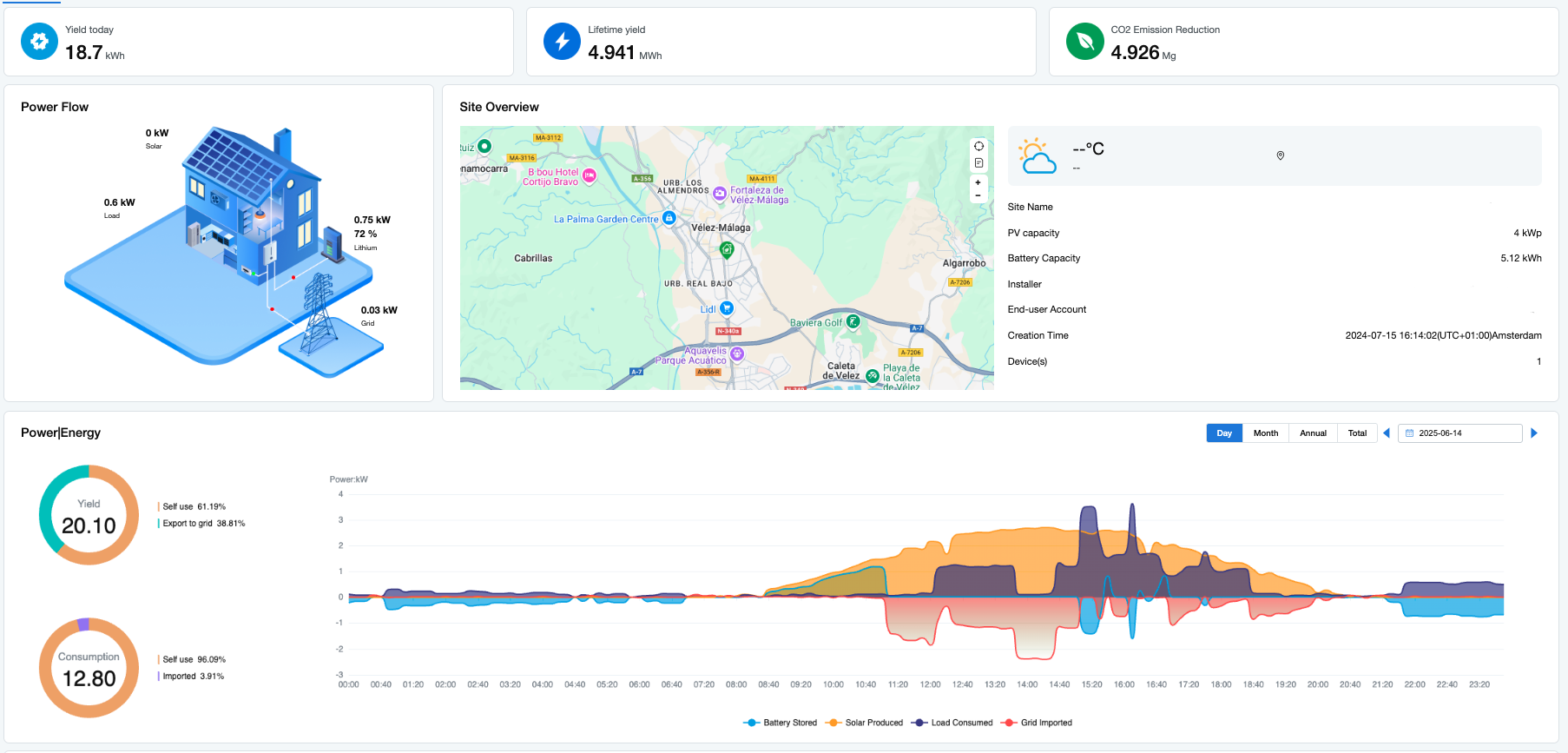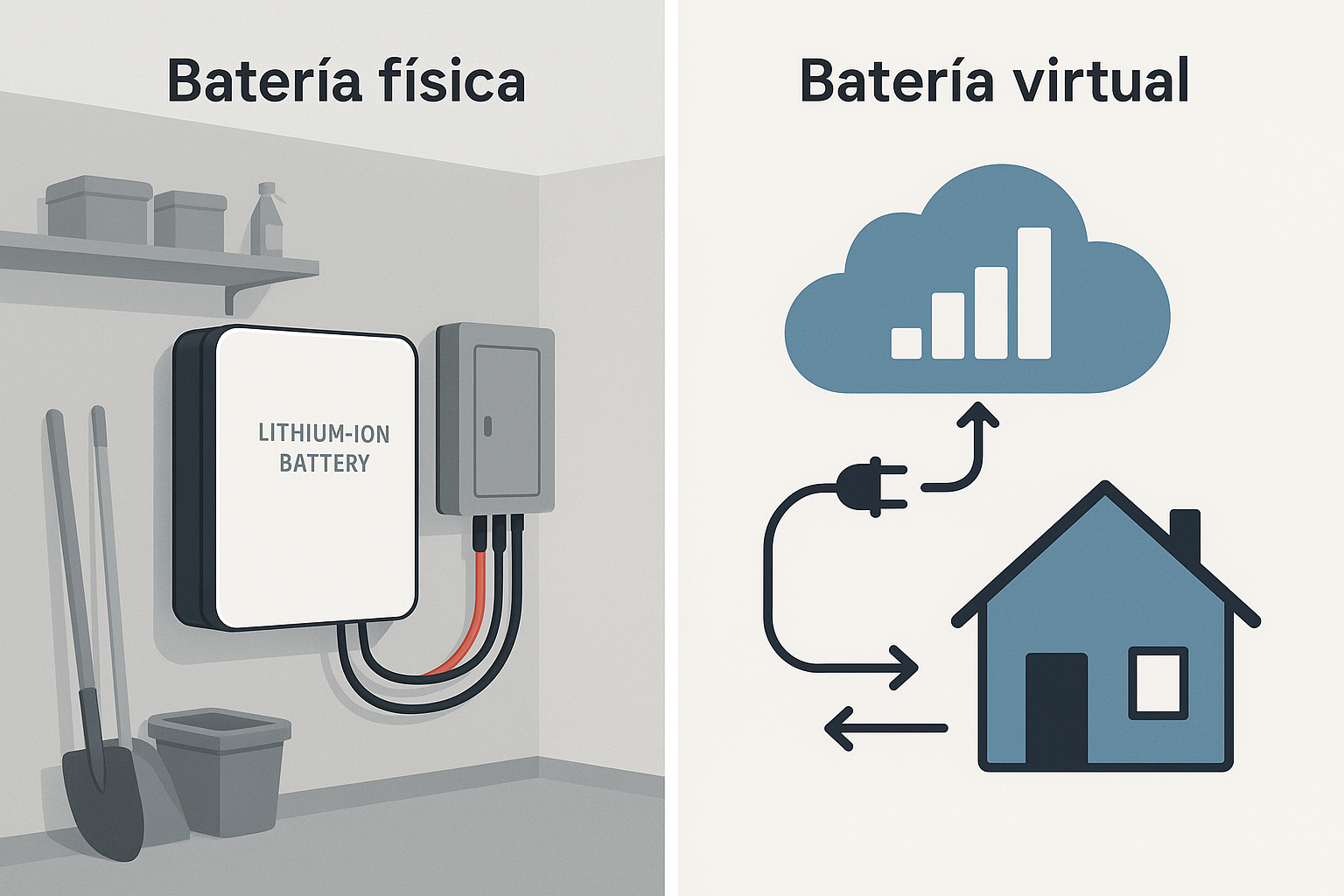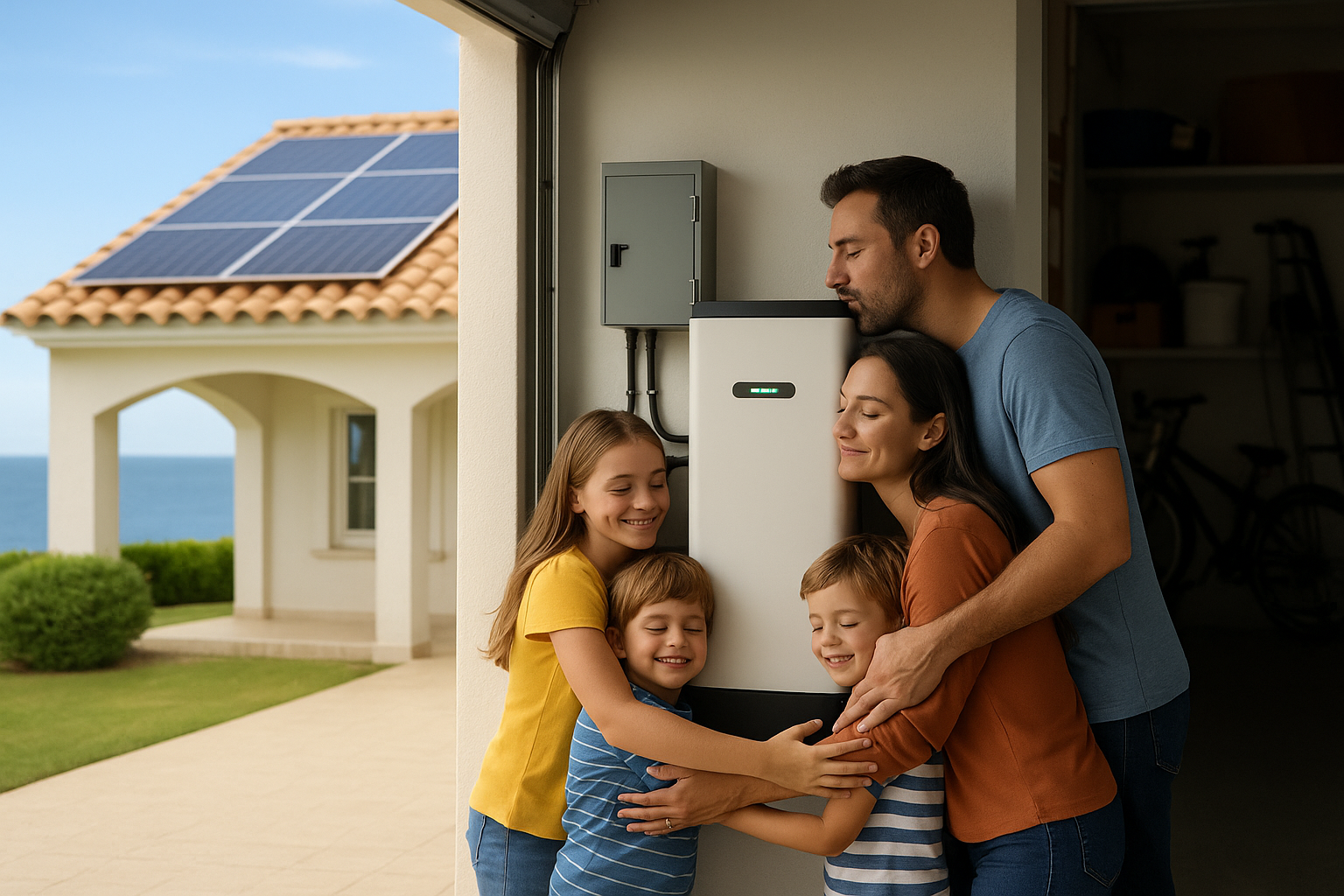
🔋 Self-Consumption with Battery: Is It Really Worth It and What Subsidies Are Available in 2025?
In recent years, more and more households in Málaga have joined solar self-consumption, driven by economic savings, sustainability, and attractive subsidies. But if you already have solar panels or are considering installing them, you are very likely wondering: is it worth adding a battery as well? 🤔
The answer is not the same for everyone. It depends on your consumption, habits, electricity rate, and, crucially, whether you can take advantage of the current subsidies. In this article, we guide you step by step so you can understand what a solar battery is, the types available, when it is profitable, and which subsidies you can take advantage of in Málaga during 2025. 💰
⚙️ What is a Solar Battery and How Does It Work?

A solar battery is a system that stores the energy your solar panels generate during the day and that you do not consume immediately. You can use this stored energy at night, when the panels are not producing, or during periods of high energy consumption. 💡
Instead of returning the excess energy to the grid in exchange for minimal compensation (usually between €0.04 and €0.10 per kWh), the battery allows you to make the most of your own energy. This drastically reduces the amount of electricity you need to buy from the utility, thereby maximizing your actual self-consumption. ✅
📦 Physical Battery vs. Virtual Battery: Which One Suits Me Best?

When we talk about "battery" in the solar context, we can refer to two very different concepts: 👇
🔋 Physical Battery
It is a real device, usually made of lithium, installed in your home. It physically stores the excess energy from your panels and allows you to use it at any time, day or night. Think of it as a personal "electricity tank." 🏠
Advantages:
- True energy independence: You are less dependent on the grid.
- Maximum utilization: You use 100% of your solar production. ☀️
- Safety: Ability to have power in case of an outage (with a backup system). 🛡️
Disadvantages:
- High initial investment: Prices starting from €2,000. 💸
- Requires space and professional installation. 🛠️
- Gradual degradation over time (although its lifespan is long). ⏳
☁️ Virtual Battery
It is not a physical device, but a service offered by some utility companies. The energy you do not consume is fed into the grid, and instead of compensating you on your monthly bill, they "store" that surplus as a credit to offset future bills, even in subsequent months. 💻
Advantages:
- No initial investment or installation required. ✨
- Simple and maintenance-free. 👍
- Ideal if you mainly consume during the day and want to make the most of your surplus. ☀️
Disadvantages:
- No real storage: You are always dependent on the electric grid. 📉
- The compensation value is usually lower than the price at which you buy electricity. 💰
- Dependence on government policies and the viability of the utility company. 🤝
📊 When Is It Profitable to Install a Physical Battery?
Not every case justifies investing in a physical battery. A battery is more profitable if:
- Your energy consumption is high in the afternoon or evening, when your panels are not producing. 🌙
- You are looking for greater independence from the electric grid or want to protect yourself from future price increases. 🌍
- You can benefit from significant subsidies, such as those from the Junta de Andalucía. 💸
- You have a long-term perspective and plan to stay many years in the same home. 🏡
"At JuraON we always say: if you don’t use the battery at least 60% of the days of the year, it probably isn’t worth it. But if you do… it can completely change your electricity bill!" ⚡
💰 How Much Does It Cost and What Subsidies Are Available in Málaga in 2025?
A home battery usually costs between €2,000 and €6,000, depending on its capacity and the energy management system it includes. However, if you live in Málaga, you can access very attractive subsidies in 2025, which combine direct grants and tax benefits. 🎉
The landscape of subsidies for photovoltaic installation in Málaga in 2025 has been renewed. Although previous calls under the Next Generation EU funds (RD 477/2021) and the Ecovivienda Plan have already ended in Andalusia, the Junta de Andalucía has launched a new and significant framework of regional incentives. This is established through the Order of April 24, 2025 from the Ministry of Industry, Energy, and Mines, and applications are expected to open in June 2025. It is crucial to note that these subsidies will be granted on a first-come, first-served basis until funds are exhausted, so acting early is key. 🗓️
Here is a summary of the key incentives available or expected for your photovoltaic installation (with or without a battery) in Málaga during 2025: 👇
| Type of Subsidy | Main Beneficiary | Amount / Percentage | Status / Deadline | Key Requirements (for self-consumption with or without a battery) |
|---|---|---|---|---|
| Regional Subsidies (Order 24/04/2025, Junta de Andalucía) | ||||
| Individuals (Residential) | Single-family homes and homeowners' associations | Up to €600/kWp (individual home); up to €710/kWp (community). For batteries: up to €490/kWh of capacity. |
Expected opening: June 2025 (Non-competitive allocation) | Action after 30/04/2025, reduce at least 30% of non-renewable energy consumption, and be up to date with payments. |
| Empresas (Pymes/Autónomos) | Pymes y autónomos | Hasta 50% del coste (según tamaño de empresa) | Expected opening: June 2025 (Non-competitive allocation) | Actuación posterior al 30/04/2025, inversión mínima 10.000€, al corriente de pagos. |
| Hogares Vulnerables | Hogares con recursos económicos limitados | 95%-100% del coste de la instalación | Expected opening: June 2025 (Non-competitive allocation) | Actuación posterior al 30/04/2025, al corriente de pagos (requisitos flexibilizados). |
| Beneficios Fiscales (Nivel Municipal y Nacional) | ||||
| Deducción IRPF (Nacional) | Particulares (Vivienda habitual/alquiler) | 20%, 40% o 60% (máx. 5.000€/7.500€ de base) | Instalación antes del 31/12/2025; Certificado antes del 01/01/2026. | Reducción del 7% o 30% en energía no renovable, o alcanzar calificación A/B. CEE previo y posterior. Vivienda no afecta a actividad económica. |
| Bonificación IBI (Municipal) | Propietarios de Inmuebles | Hasta 50% de la cuota (duración 2-7 años según municipio). Ejemplos: Málaga capital: 15% (3 años) Vélez-Málaga: 50% (3 años) |
Permanente (varía por municipio) | Instalación de sistemas solares (ej. >4m²). Solicitud anual en el Ayuntamiento. |
| Bonificación ICIO (Municipal) | Propietarios (quien costea la obra) | Hasta 95% del impuesto. Ejemplos: Málaga capital: 95% Vélez-Málaga: 95% |
Permanente (varía por municipio) | Instalación de sistemas fotovoltaicos para autoconsumo. Solicitud al tramitar el permiso de obras. |
| Ayudas IDAE (Nacional - Innovación) | Empresas, comunidades energéticas, etc. | Varía según programa (proyectos innovadores) | Activa hasta 31/03/2026 | Proyectos de agrivoltaica, fotovoltaica flotante, almacenamiento en infraestructuras existentes, autoconsumo colectivo para vulnerables, bombas de calor. |
Additionally, freelancers and companies can access additional subsidies for solar storage through European FEDER programs or NextGen funds focused on innovation, which complement the regional subsidies. 🇪🇺
🧮 Real Case in Málaga: Savings with a Battery

Imagine a family of 4 in Nerja with a 5.4 kWp installation. Before installing a battery, their bill was around €75/month, a cost that, even with panels, was still significant due to consumption during non-sunny hours.
By adding a 5 kWh battery (with a cost of €4,000 before subsidies), they managed to reduce their bill to just around €25/month, achieving a consistent saving of €50 per month. After applying the regional subsidy of €490/kWh for batteries, the net cost of the battery was reduced to only €1,550 (€4,000 - €2,450 in subsidy).
With this subsidized cost and a monthly saving of €50, their investment will pay off in an exceptional period of less than 2 years and 7 months (31 months). A truly attractive return! 🚀
✅ Conclusion: Is a Battery Right for You?
If you have a significant energy consumption at night, are looking for greater independence from the grid, and can take advantage of the new subsidies from the Junta de Andalucía and tax benefits, then installing a battery for your self-consumption in Málaga can be a very profitable investment. If these conditions do not fit your situation, a virtual battery or waiting might be a better option for now. 🤔
🔍 Use our solar calculator or call us.
At JuraON, we provide a free study, help you with all the subsidy paperwork, and take care of the installation from start to finish. 📞
